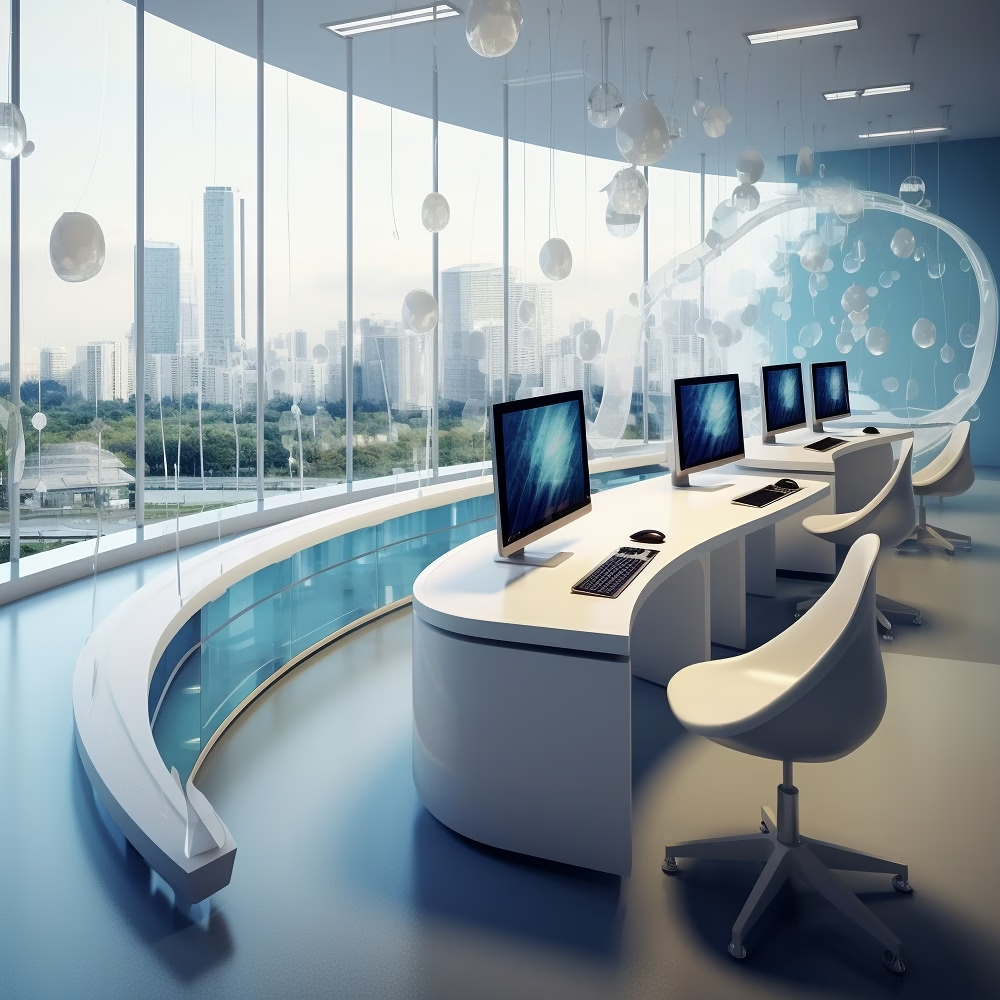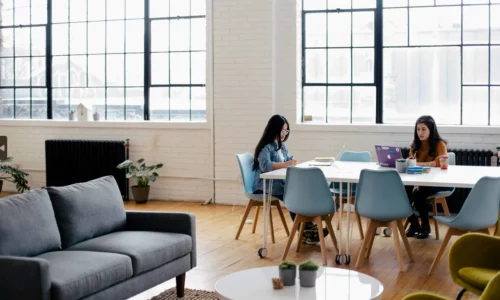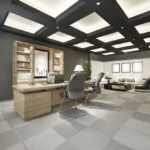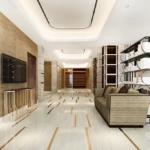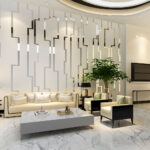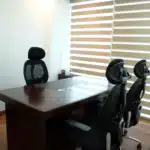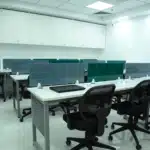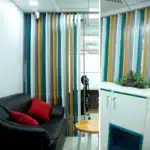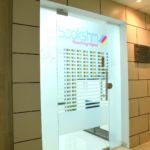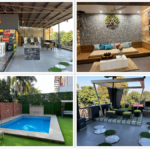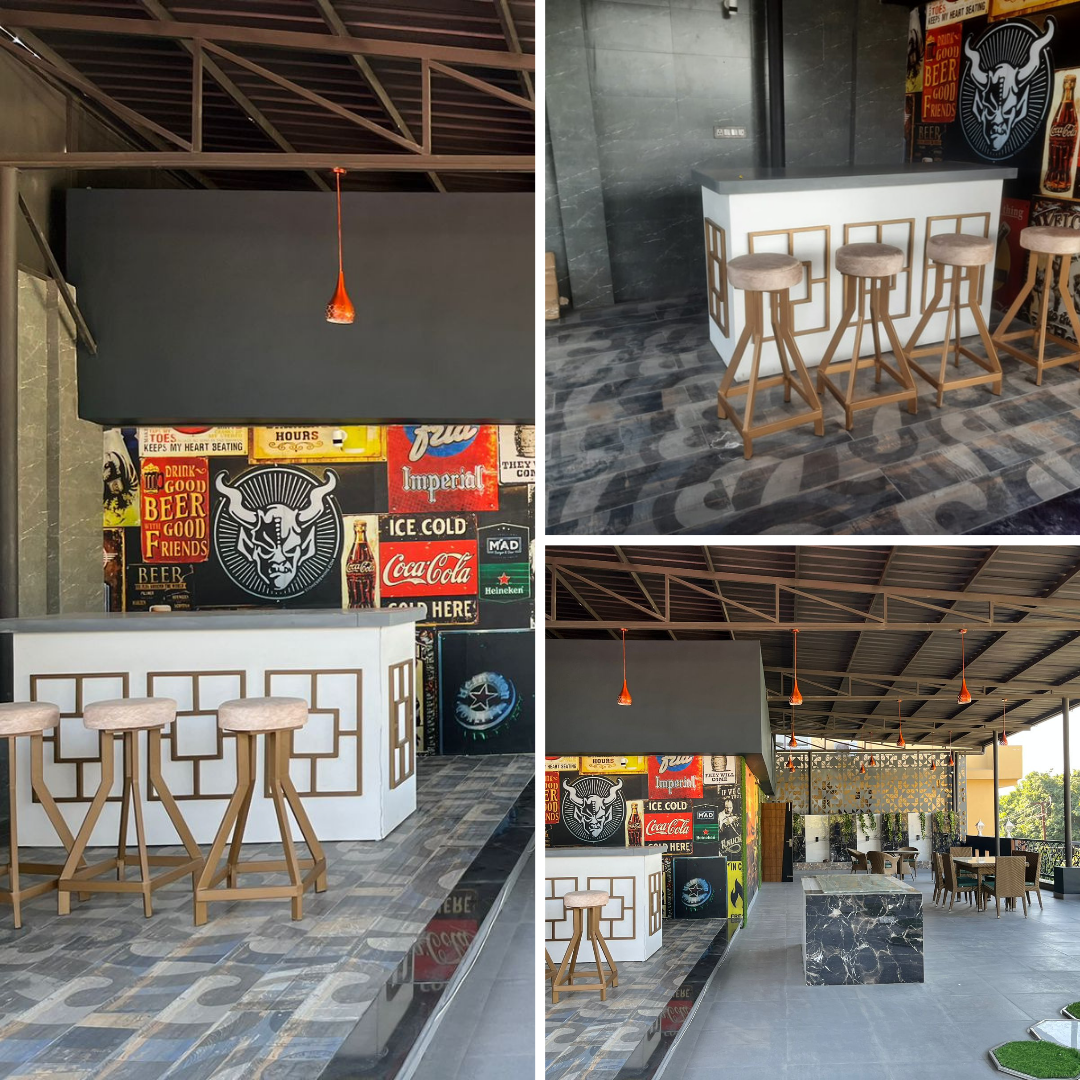Smart Office Design Ideas with Technology Integration
- amodini
- 0 Comments
Offices are no longer just physical spaces where employees sit and work. Modern businesses focus on building smart office designs that use technology to improve efficiency, employee comfort, and overall productivity. A smart office is a combination of intelligent design, digital tools, and connected devices that create a workspace suited for the future.
Technology integration in office design has transformed the way organizations operate. From automated lighting systems to digital collaboration platforms, every element of a workplace can now be improved with smart solutions. This article will explore smart office design ideas with technology integration in detail, explain why they are important, and provide practical ways to implement them.
What is Smart Office Design?
A smart office design is a modern workplace setup that uses technology and digital systems to create a more efficient and user-friendly environment. Instead of relying only on traditional office layouts, smart designs focus on using innovative solutions like IoT devices, energy-efficient systems, and collaborative software to make work smoother.
The concept of smart offices has grown over the years because businesses realized that technology is not just for communication—it can also shape how employees interact with their workspace. According to Wikipedia, smart offices combine ergonomics, design, and technology to improve both functionality and employee well-being.
Benefits of Smart Office Design with Technology
Before discussing specific ideas, it’s important to understand why integrating technology into office design is beneficial. Some key advantages include:
-
Increased Productivity – Smart tools reduce manual tasks and save employee time.
-
Better Communication – Technology ensures faster and smoother collaboration among teams.
-
Energy Efficiency – Automated systems help cut down energy consumption.
-
Improved Employee Comfort – Smart furniture and ergonomic designs keep employees healthier.
-
Enhanced Security – Digital access control and surveillance protect sensitive business data.
These benefits show that technology-driven office design is not only about aesthetics but also about creating a productive and secure environment.
Smart Office Furniture and Ergonomics
One of the first steps in smart office design is investing in smart furniture. Traditional chairs and desks often lead to health problems like back pain or poor posture. With technology integration, offices can install adjustable desks, ergonomic chairs, and even smart furniture that tracks sitting time.
For example, sit-stand desks allow employees to switch between sitting and standing throughout the day, which improves circulation and reduces fatigue. Some offices also use smart chairs that remind employees when they have been sitting for too long.
This focus on ergonomics not only improves health but also boosts employee efficiency. Ergonomic office design helps reduce workplace injuries and supports long-term employee satisfaction.
Smart Lighting Systems
Lighting plays a very important role in how people feel and work. Poor lighting can cause eye strain, headaches, and low productivity. A smart office integrates automated lighting systems that adjust according to natural light and employee needs.
For example:
-
Sensor-based lights that switch on when someone enters a room.
-
Daylight-responsive systems that dim or brighten based on natural light.
-
Customizable lighting controlled via mobile apps for personal comfort.
Such solutions save energy and create a comfortable working environment.
Digital Collaboration Tools
Modern offices rely heavily on team collaboration. With hybrid work models becoming popular, smart office design must include digital platforms that allow smooth communication.
Some examples of collaboration tools are:
-
Video conferencing platforms for virtual meetings.
-
Cloud storage solutions to share files easily.
-
Project management tools that keep track of tasks and deadlines.
These tools allow employees to work from anywhere without losing connection with their team. The integration of smart meeting rooms with digital whiteboards and touchscreens also improves brainstorming sessions.
Automated Climate Control Systems
Employee comfort depends greatly on room temperature. A smart climate control system can automatically adjust air conditioning and heating according to room occupancy and weather.
For example:
-
Sensors detect when a room is empty and switch off cooling/heating.
-
Systems adjust temperature for specific zones in the office.
-
Employees can use mobile apps to control temperature in their area.
This not only saves energy but also ensures employees feel comfortable throughout the day.
Office Security and Access Control
Every office needs strong security. A smart office design uses technology to improve safety. Some solutions include:
-
Biometric access systems like fingerprint or face recognition.
-
Smart ID cards for secure entry.
-
Surveillance cameras connected to cloud storage.
These systems prevent unauthorized entry and keep data safe. In some offices, visitors are registered digitally, making the process faster and more secure.
Wireless Charging and Smart Power Solutions
In the digital age, employees depend on multiple devices like laptops, tablets, and smartphones. Smart offices include wireless charging stations and desks with built-in power outlets. This reduces clutter from wires and makes it easier for employees to keep their devices charged.
Additionally, smart power strips can monitor energy consumption and help offices reduce electricity waste.
Smart Meeting Rooms
Traditional meeting rooms are being replaced by smart meeting rooms equipped with modern technology. These include:
-
Interactive whiteboards for presentations.
-
Video conferencing equipment for remote teams.
-
Voice-controlled assistants for scheduling meetings.
-
Smart sound systems that cancel background noise.
These setups make meetings more productive and reduce the time wasted on technical issues.
IoT Devices in Smart Offices
The Internet of Things (IoT) has become a major part of smart offices. IoT devices like smart sensors, connected printers, and occupancy detectors make office operations smoother.
Here is a simple table showing examples of IoT devices used in smart offices:
| IoT Device | Function in Smart Office |
|---|---|
| Smart Sensors | Detect occupancy, temperature, and air quality |
| Connected Printers | Allow wireless printing from any device |
| Smart Locks | Provide secure entry using biometrics or codes |
| Smart Coffee Machines | Prepare drinks automatically when scheduled |
| Voice Assistants | Control lights, schedules, and office appliances |
Future of Smart Office Design
Smart office design is not just a trend but the future of workspaces. As technology advances, offices will become even more connected and automated. Artificial Intelligence (AI) will play a bigger role in predicting employee needs, and Virtual Reality (VR) may create digital meeting spaces.
Companies that invest in smart office design today will benefit from higher employee satisfaction, improved productivity, and lower operational costs.
Also Read:
- What Is a Mood Board in Interior Design?
- What Is Modern Classic Interior Design?
- What is Green Interior Design?
- What Are the Different Materials Used for Interior Design?
- Is Interior Architecture the Same as Interior Design?
Conclusion
Smart office design with technology integration is about creating a workplace that balances comfort, efficiency, and modern tools. From smart furniture to IoT devices, every element of the office can be optimized to support employees and business growth.
Businesses that adopt these smart solutions will not only save costs but also attract and retain top talent. With technology continuously evolving, smart offices will keep shaping the way people work in the future.

